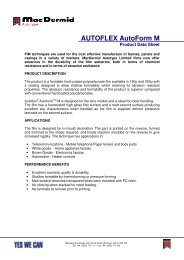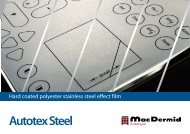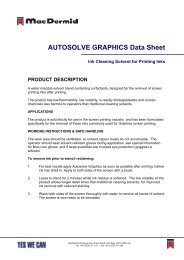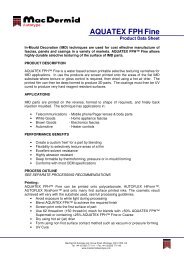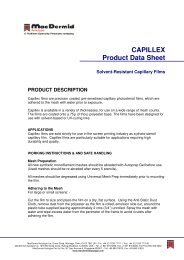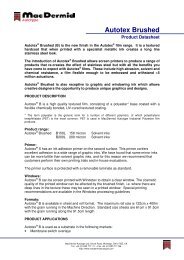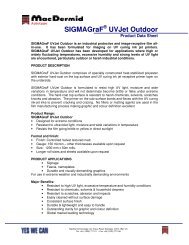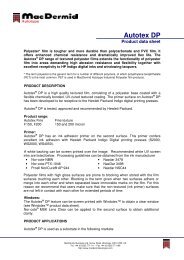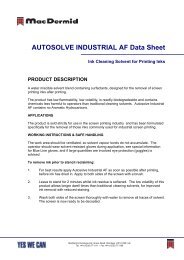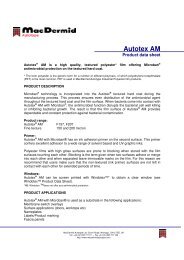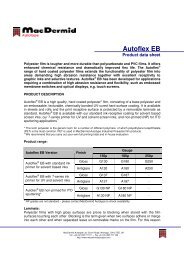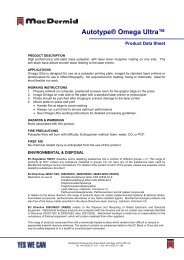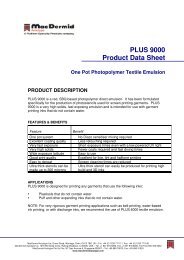Screen E-Book (.PDF) - MacDermid Autotype
Screen E-Book (.PDF) - MacDermid Autotype
Screen E-Book (.PDF) - MacDermid Autotype
- No tags were found...
Create successful ePaper yourself
Turn your PDF publications into a flip-book with our unique Google optimized e-Paper software.
stencil causes a thick edge needed modification.If you have a really strong squeegee pressure(relative to mesh tension) then insteadof the 3rd bit of mesh being in contactwith the substrate (as in the picture above)maybe the 1st is in contact – so the thickedge extends only a small way. With reallyweak squeegee pressure then the meshwon’t be in contact with the substrate atall, so the whole track is “thick”. What constituteshigh or low pressure also (for subtlereasons) depends on the orientation of theline with respect to the squeegee, so weend up with a nightmare of uncontrolledink deposit. This is not some theoreticalworry. In our experiments, over a reasonablerange of squeegee pressures, anglesand line orientations (captured in 81 differentprints) here’s how a high EOM and lowEOM stencil (both low-Rz) compared:With the high-EOM stencil in the topgraph, track resistances varied from ~7 tomore than 15 ohms. With the low-EOMstencil, resistance was amazingly constant.See the next section for another exampleof why the low-EOM, low-Rz stencil alsoperforms much better compared to itshigh-Rz alternative.The high-EOM stencil(top) gives large thickness/resistivity changes withsqueegee pressure/angle/orientation. The low-EOM,low-Rz stencil (below) is inbetter control80



